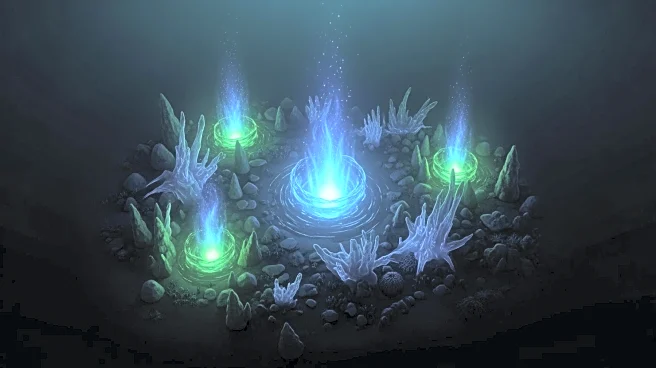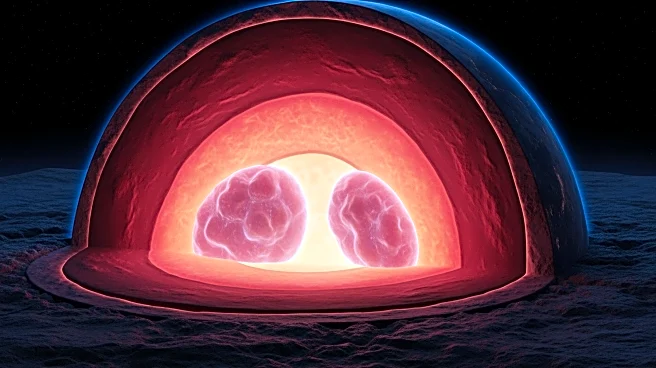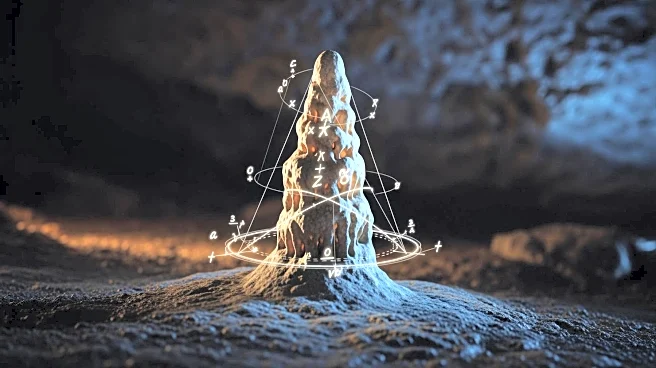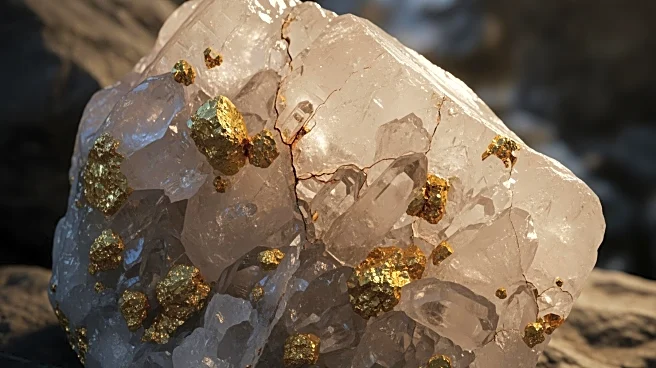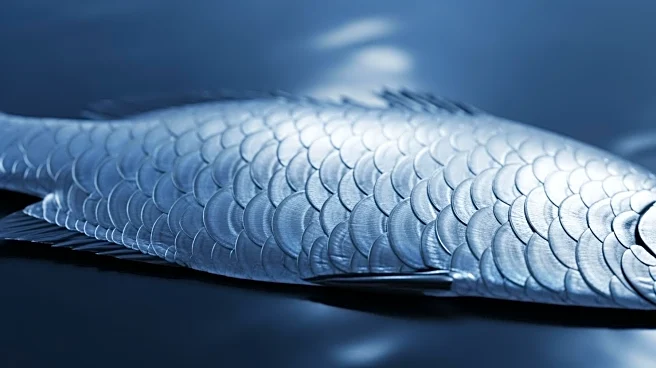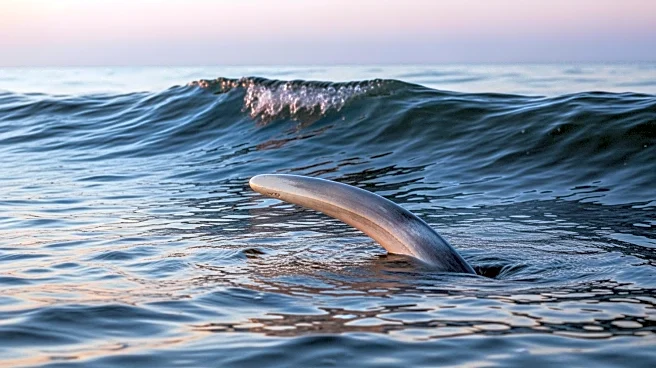What's Happening?
Scientists have uncovered a unique deep-sea vent field off the coast of Papua New Guinea, revealing a new ecosystem. At a depth of 4,250 feet, researchers found a combination of hot hydrothermal vents
and cold methane-rich gas seeps, a phenomenon never observed before. This discovery, published in Scientific Reports, offers insights into Earth's underwater ecosystems. The vents were found near Lihir Island, at Conical Seamount, where magma beneath the seafloor warms sediments, producing methane gas and hot mineral-rich fluids. The discovery was made using the ROV Kiel 6000, a remotely operated vehicle, revealing a vibrant ecosystem with deep-sea mussels, shrimp, and purple sea cucumbers thriving in this environment.
Why It's Important?
The discovery of the Karambusel field is significant for marine biology and geology. It provides a natural laboratory for studying extremophiles and the interaction of geological forces. The unique chemical conditions influence both the ecosystem and the geology of the region, depositing precious metals and toxic elements. However, the ecosystem is under threat from human activities, such as mining operations and exploration licenses for seabed minerals. Protecting this biodiversity is crucial, as it offers a glimpse into the resilience of marine life and the processes shaping Earth's oceans.
What's Next?
Further exploration and conservation efforts are needed to understand and protect the Karambusel field. Dedicated research expeditions could uncover unknown species and study the ecosystem's adaptation to extreme conditions. Conservation efforts must address the threats from human activities, ensuring the preservation of this fragile habitat. The findings highlight the importance of targeted marine spatial planning and strict environmental protections to prevent commercial exploitation.
Beyond the Headlines
The discovery raises ethical and environmental concerns about the impact of human activities on unique ecosystems. The potential for commercial exploitation underscores the need for international cooperation in marine conservation. The Karambusel field could serve as a model for studying the effects of climate change and pollution on deep-sea environments, offering insights into global environmental challenges.
